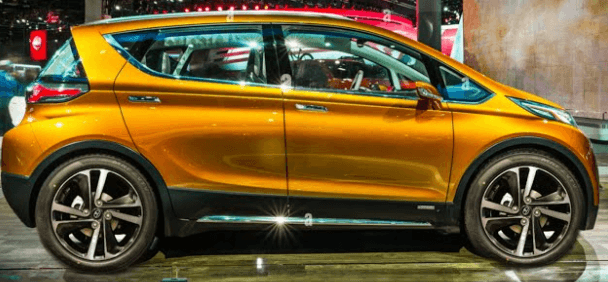The Tata Nano, once celebrated as the world’s cheapest car, is making a dramatic comeback in a new, futuristic avatar. The upcoming Tata Nano EV promises to redefine affordable electric mobility in India, combining eco-friendliness, technological advancements, and a budget-friendly price.
Under the visionary guidance of Ratan Tata, this vehicle aims to bring sustainable transportation to the masses. Let’s delve into its anticipated launch, pricing, features, and its potential impact on the Indian automotive market.
Tata Nano EV: A Legacy Reborn
Launched in 2008 as the world’s most affordable car, the original Tata Nano was priced at around ₹1 lakh (approximately $2,000). While it garnered global attention, challenges like safety concerns and branding issues overshadowed its initial success.
However, Ratan Tata’s vision for the Nano—an affordable car for middle-class families—remains steadfast. The Tata Nano EV is set to inherit the principles of affordability and practicality, infused with modern, environmentally conscious technology.
Key Features of the Tata Nano EV
The Tata Nano EV stands out as an ideal urban commuter with features that blend compact design, advanced technology, and sustainability.
1. Compact Design
The Nano EV retains its compact dimensions, perfect for navigating congested city streets and tight parking spots. Its updated exterior includes:
- Sleek lines and modern aesthetics.
- Futuristic lighting elements.
- A bold and stylish front fascia.
2. Electric Powertrain
The Nano EV will feature a high-performance electric motor paired with advanced battery technology, ensuring:
- Smooth acceleration.
- Reliable performance for urban commutes.
- Low maintenance costs compared to conventional vehicles.
3. Range and Charging
With a range of 150-200 km per charge, the Nano EV is designed for daily urban use. Fast-charging capabilities are expected, allowing users to:
- Recharge up to 80% in under an hour at compatible stations.
- Enjoy cost-effective and convenient charging options.
4. Modern Interiors
Despite its compact size, the Nano EV will come equipped with modern interiors, featuring:
- A digital infotainment system with smartphone connectivity.
- Enhanced safety features, including airbags and ABS.
- Comfortable seating for small families.
5. Sustainability
Tata Motors aims to use eco-friendly materials in production, reducing the vehicle’s overall carbon footprint. Additionally, its electric powertrain ensures zero tailpipe emissions, contributing to cleaner air in cities.
Expected Specifications: Tata Nano EV
| Feature | Details |
|---|---|
| Dimensions | Compact (similar to original) |
| Battery Range | 150-200 km per charge |
| Charging Time | Fast charge: ~1 hour |
| Seating Capacity | 4 passengers |
| Expected Price | ₹6-8 lakh ($7,200-$9,600) |
| Launch Date | Mid-2025 (tentative) |
| Powertrain | High-efficiency electric motor |
Launch Timeline: When Can We Expect It?
The Tata Nano EV’s launch is anticipated around mid-2025. Tata Motors’ strategy aligns with India’s increasing EV adoption and government incentives promoting sustainable transportation.
While the exact launch date is subject to market and production factors, the Nano EV’s development reflects Tata’s commitment to affordable electric mobility.
Pricing: How Affordable Will It Be?
The Tata Nano EV’s expected price range is ₹6-8 lakh ($7,200-$9,600), positioning it as one of the most affordable electric vehicles in India. This pricing strategy targets:
- First-time car buyers.
- Budget-conscious urban commuters.
- Environmentally-conscious families.
By keeping costs low, Tata Motors aims to democratize EV ownership and accelerate India’s transition to sustainable transportation.
Tata Nano EV’s Market Impact
The launch of the Tata Nano EV is expected to reshape India’s automotive market. Key impacts include:
1. Accelerating EV Adoption
The Nano EV’s affordability addresses a major barrier to EV adoption in India. Its low price and compact design make it ideal for urban consumers.
2. Boosting Sustainability
With zero emissions and eco-friendly manufacturing, the Nano EV aligns with India’s climate goals, contributing to reduced air pollution and carbon emissions.
3. Inspiring Competition
The Nano EV’s launch will likely spur competitors to develop similarly affordable electric vehicles, fostering innovation and lowering prices across the EV market.
Frequently Asked Questions (FAQs)
Q1: What is the expected range of the Tata Nano EV?
The Nano EV is expected to offer a range of 150-200 km per charge, suitable for daily urban commutes.
Q2: How much will the Tata Nano EV cost?
The anticipated price range is ₹6-8 lakh ($7,200-$9,600), making it one of the most affordable EVs in India.
Q3: When will the Tata Nano EV be launched?
The launch is expected around mid-2025, though the date may vary based on production and market conditions.
Q4: What features will the Nano EV include?
The Nano EV will feature:
- Compact design.
- Electric powertrain.
- Modern interiors with infotainment and safety enhancements.
- Fast-charging capabilities.
Q5: How does the Nano EV contribute to sustainability?
With zero tailpipe emissions and eco-friendly manufacturing, the Nano EV supports reduced air pollution and aligns with global sustainability goals.
